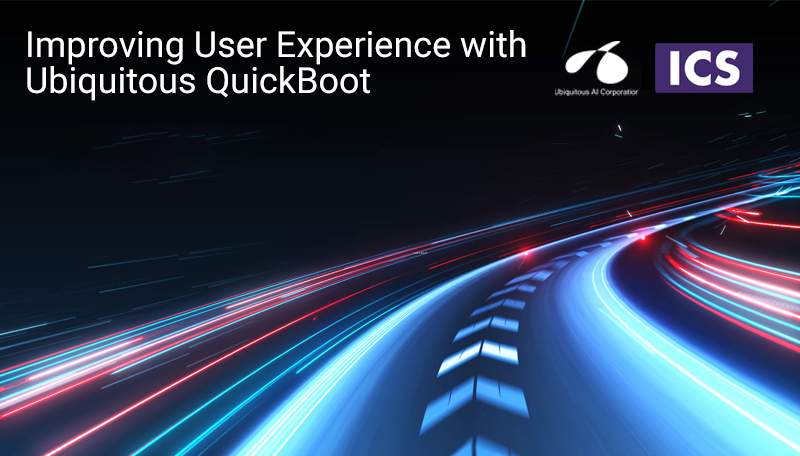
Improving User Experience with Ubiquitous QuickBoot
Boot times are critical for many embedded systems. Whether it's an In-Vehicle Infotainment (IVI) system or a medical device, waiting for the system to boot up can range from a mere inconvenience to a life-threatening issue. While the processing power of embedded systems has increased based on Moore's Law, the size and complexity of software has grown at an even greater rate and today's embedded systems often involve multiple processes and processors communicating with other systems. The traditional approach for booting an embedded Linux system may no longer be adequate to meet product requirements for startup time from a cold boot.
Addressing this issue can involve significant engineering efforts to analyze and optimize startup scripts and sequences to get boot times down to an acceptable level. This frequently occurs late in the product development process and has often proven unsuccessful.
This is where Quick Boot from Ubiquitous AI Corporation comes in. A fast start-up solution for Linux or Android-based devices, QuickBoot utilizes an approach based on restoring a system from a saved image using advanced hibernation technology. Customers developing devices with advanced Graphic User Interfaces from a variety of industries have used Ubiquitous QuickBoot to improve the user's experience, extend battery life, and increase efficiency.
In this webinar, we will introduce QuickBoot and show how it can solve slow cold boot times. You will:
- Learn the difference from other fast boot techniques on Linux or Android devices.
- Get technical details of QuickBoot.
- See a demonstration of a real-world embedded application illustrating the boot time performance.